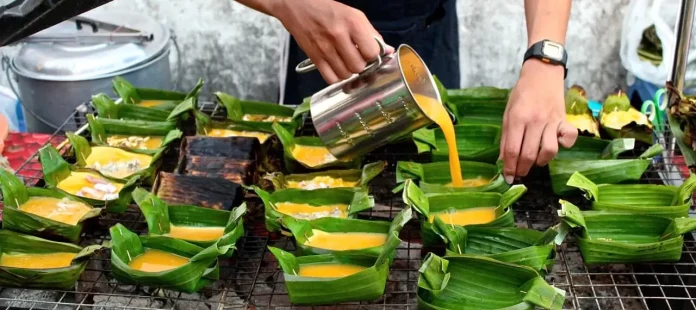Examining the Development of Thai Street Food: From Custom to Vogue Thailand is well known for its thriving street food scene, which is both a fascinating gastronomic experience for tourists and a cherished part of daily life for locals. Thai street cuisine has evolved in a way that is truly extraordinary, fusing modern trends with heritage to provide a wide variety of tastes and experiences. Come along as we explore the fascinating history of Thai street food, from its modest origins to its current standing as a popular cuisine around the world.
The History of Street Food in Thailand
Thai street cuisine has a long history, stretching back centuries, and is rooted in the nation’s rich culinary legacy. The idea of street vending originated in the vibrant marketplaces and commercial centers of ancient Thailand. Local merchants would use aromatic and fresh ingredients to highlight the best of Thai cuisine as they expertly prepared and served a variety of delicacies.
Customized Methods and Tastes
Thai street food’s traditional cooking methods and genuine flavors are what make it so appealing. Every dish, from sizzling woks to aromatic broths, is painstakingly prepared to reflect the unique harmony of sweet, sour, salty, and spicy flavors that define Thai cuisine. Food lovers all over the world are still enthralled with these ageless classics, whether it’s Pad Thai, Tom Yum, or Som Tum.
Creativity and Adjustment
Thai street food has welcomed innovation and adaptation to meet changing preferences and lifestyles, even if classic recipes are still loved. The vibrant development of street cuisine in Thailand can be attributed to innovative fusions, modern takes on traditional recipes, and influences from around the world. Thai street food’s alluring fusion of history and innovation has catapulted it onto the international scene because to its adaptability.
Trends and Worldwide Effect
Thai street cuisine has reached previously unheard-of heights of popularity thanks to the growth of social media and culinary tourism, eclipsing geographical boundaries and winning over the hearts and palates of foodies everywhere. Its widespread impact has been attributed to a number of factors, including the aesthetically pleasing presentation of food, the sensory thrill of aromatic herbs and spices, and the social dining experience provided by street food vendors.
Heritage Preservation
Even as Thai street cuisine changes and becoming more contemporary, maintaining cultural legacy and helping out local merchants never wavers. The genuine essence of Thai street cuisine will continue to flourish thanks to initiatives to preserve traditional recipes, advance sustainable techniques, and highlight the meal’s cultural value.
Prospects for the Future and Sustainability
Thai street food is evolving along with the world. The future of street food is increasingly reliant on embracing eco-friendly procedures, ethical sourcing, and sustainability. A more accountable and resilient street food culture is being paved with initiatives to decrease waste, assist local communities, and improve the quality of food offerings.
In conclusion, Thai street food’s transition from tradition to craze is evidence of its ongoing appeal and versatility. Thai street food has carved out a special position for itself in the world of cuisine by appreciating its rich history and embracing innovation, providing a delicious trip that is both modern and nostalgic. Enjoying Thai street food in a busy foreign metropolis or when meandering through the colorful streets of Bangkok, everyone who tries it never forgets the spirit of this cherished culinary tradition.


